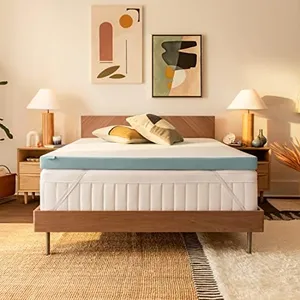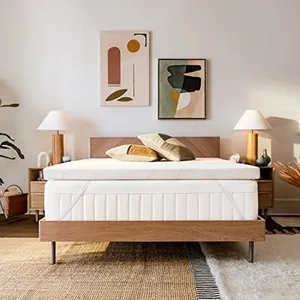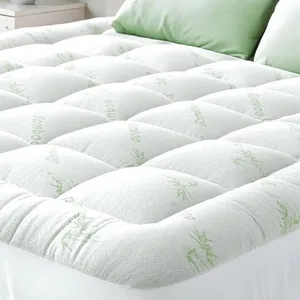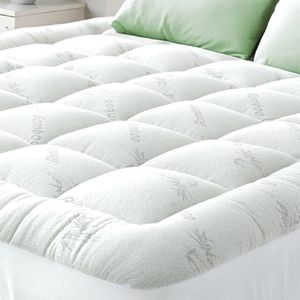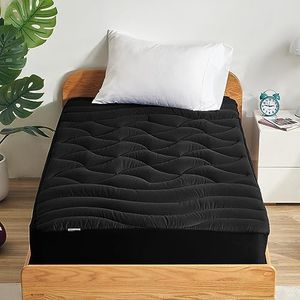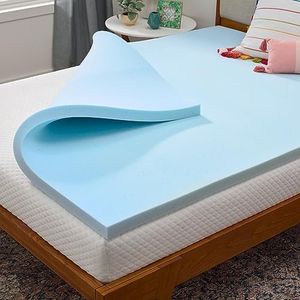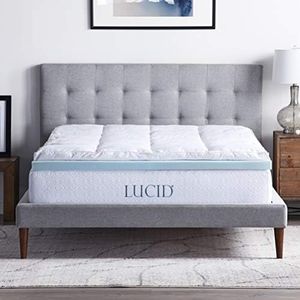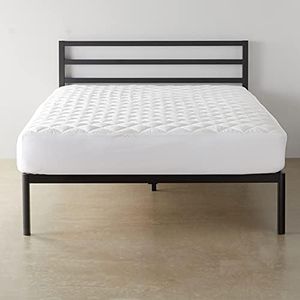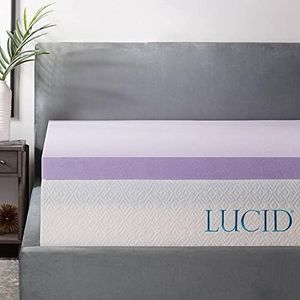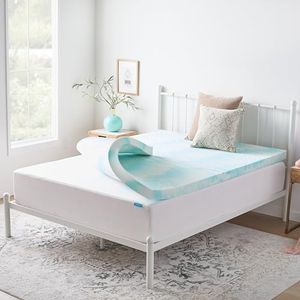We Use CookiesWe use cookies to enhance the security, performance,
functionality and for analytical and promotional activities. By continuing to browse this site you
are agreeing to our privacy policy
10 Best Twin Mattress Toppers
From leading brands and best sellers available on the web.Buying Guide for the Best Twin Mattress Toppers
Choosing the right twin mattress topper can make a big difference in your sleep comfort and overall restfulness. The main purpose of a mattress topper is to add an extra layer of comfort, support, or protection to your existing mattress. Before making a choice, consider any issues you want to address—do you need extra softness, more support, cooling features, or help with allergies? Think about your sleep position, any pain or discomfort you experience, and how your current mattress feels. Understanding a few key features will help you pick a topper that’s the best fit for your individual needs.MaterialMaterial refers to the main substance the topper is made from, such as memory foam, latex, down, or fiberfill. This is important because it affects the feel, durability, and performance of the topper. For example, memory foam is known for its contouring and pressure relief, latex is bouncy and cooler, while down is soft and plush. Each material comes with different maintenance needs and potential allergy concerns. If you want close body support or have joint pain, memory foam might be best. If you sleep hot or have allergies, consider latex or hypoallergenic fibers. Think about your comfort preferences, any sensitivities, and how much maintenance you’re willing to do when choosing the right material.
ThicknessThickness is how deep the mattress topper is, measured in inches. This is important because it impacts the comfort and support you’ll get. Thinner toppers (about 1-2 inches) are good for a subtle boost in softness, while medium-thick toppers (2-3 inches) can provide noticeable cushioning and can slightly alter the feel of your mattress. Thicker options (3-4 inches or more) offer significant plushness and can be helpful if you need to revive an old mattress or want deep cushioning for pressure relief. If your mattress is too firm, go for a thicker topper. If you want just a touch of comfort or need to keep the bed's height manageable, choose a thinner one. Your body weight and sleeping position also matter—side sleepers often prefer thicker toppers for pressure relief, while back or stomach sleepers might do better with thinner, firmer options.
FirmnessFirmness describes how soft or supportive the topper feels when you lie down on it. This is a key factor because it affects your overall comfort and spinal alignment. Mattress toppers are usually labeled as soft, medium, or firm. Softer toppers add plushness and are ideal if you want to sink in a bit or relieve pressure on your shoulders and hips. Medium toppers balance softness and support, making them a versatile choice for most people. Firmer toppers add support, which can help if your mattress feels too soft or if you want to keep your body better aligned. Your sleep position and preferred feel should guide this decision: side sleepers usually like softer toppers, while back or stomach sleepers may benefit from something firmer.
Cooling FeaturesCooling features refer to materials or designs that help control temperature and prevent overheating as you sleep. This is important if you tend to sleep hot or live in a warm climate. Some toppers use gel-infused memory foam, breathable latex, natural wool, or have special covers that wick away moisture and increase airflow. These options help dissipate heat and keep you feeling cooler. If you get hot at night, look for toppers specifically marketed as cooling or with added temperature-regulating features. If you don’t have temperature issues, this spec may not be as crucial for your choice.
Cover and WashabilityThe cover is the fabric layer that encases the topper, and washability refers to how easy it is to clean the topper or its cover. This is important for maintaining hygiene, especially if you have allergies or spill risks. Some toppers have removable, machine-washable covers, while others might need spot cleaning. If cleanliness and maintenance are top priorities, look for a topper with a removable, easy-care cover. If you don’t expect to get the topper dirty often, or if you use a separate mattress protector, this may be less important.
Motion IsolationMotion isolation is how well the topper absorbs movement, making it less likely for you to feel your partner toss and turn. This is usually more relevant if you share your twin bed or if you’re a light sleeper easily disturbed by movement. Memory foam toppers are generally best at isolating motion, while latex and fiber-filled options tend to transfer more movement. If sleeping undisturbed is your priority, opt for toppers known for good motion isolation.
